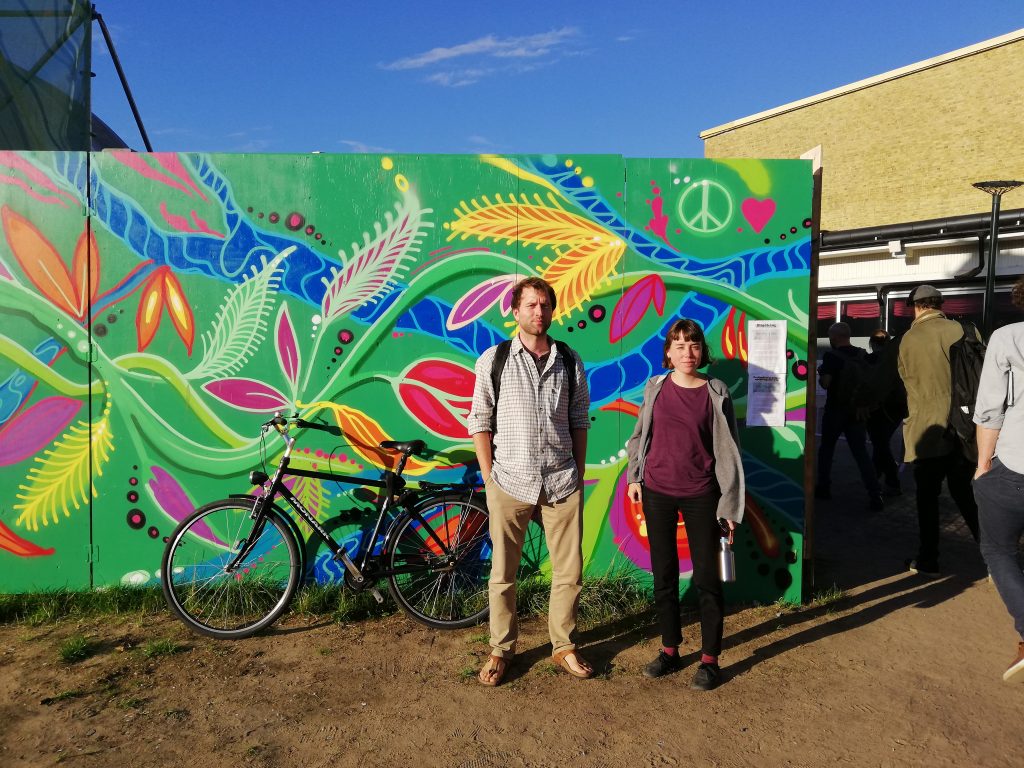Nerväxt eller degrowth kan vara ett sätt att skapa ett mer hållbart samhälle både socialt, ekologiskt och ekonomiskt. Det menar två deltagare på Degrowthkonferensen i Malmö i augusti i en intervju (på engelska) med Matilda Nilsson Morris, deltagare på kursen Hållbarhet, journalistik och sociala medier.

A guide, more or less, to Degrowth with Karÿn and Adam
Between the 21st and the 25th August, the International Degrowth Conference took place in Malmö. But what, exactly, is degrowth? Aside from a quick scan through Google to see what the movement is about, I had no idea what I’d get myself into by going to the conference. So to find out more, I spoke to Karÿn and Adam.
Karÿn is a PhD student in Wales, originally from the Netherlands. She came across degrowth through her activism in feminism, which lead her to the environmentalist movement. She believes feminism and environmentalism can and should interact. Now she interviews activists about the shift from collective to individual environmentalism and how that relates to privilege within environmental activism on a personal and general level. She is here to learn more about the degrowth approach and how she can use this approach combined with environmentalism and feminism. She also came to the conference to meet other people with whom she can discuss topics related to degrowth.
Adam is a PhD student from the Czech Republic, though he stresses that he would rather be associated with his garden, where he has been growing food for the last 2 years, than his studies. He lives in a little community (collective) that is trying out alternative ways of living. At the same time, he is doing research in alternative economies. So degrowth is present in his life both as a topic of research and in practice. He has known of the movement since a couple of years back, and had gone to the last conference in Budapest. “I feel very inspired by this community and now more in an academic sense. For me (degrowth) is an inspiration in terms of writing” Adam says, “for activism, I have different streams and sources.”
Karÿn says she is very new to degrowth and that the movement links to other things she works with. “I would say the main goal is to create a more sustainable society in its many meanings, so sustainable relations, that people can live happily, healthily all over the world, and sustainable in an environmental sense, that we recognise that climate change is a problem and not only dwell on these problems, but also on practical alternatives, what can we actually do? And then also sustainable economically in the sense that we recognise the role of economics. Degrowth is also really about reorienting the idea that societies should centre around economic growth, so thinking about what sustainable economics could look like is also then shifting the purpose of economic relations and thinking about them differently, so not just in a capitalist or market sense of just buying stuff whenever we want to or feel the need, but also connecting it with other people and for instance sharing things or making things or reusing things.”
Adam mainly uses degrowth as a concept in his writing about alternative economics. He also uses it as an example in his workshops on global education. They started out with a focus on development and globalisation, but now the focus has turned more and more to activism. Schools, teachers, faculties participate in Adam’s workshops, and sometimes they are also open to the public, as the workshops are part of Adam’s business. When asked what the process of degrowth could lead to, he says he can’t see any degrowing progress. “Do you have the impression that the economy is degrowing?” he asked me. I have to agree with him, the vast majority of societal actors are centred around growth. However, when asked which values would be the most important in a hypothetical degrowing future, he replies courage, truth and love (based on the work and blog of Miki Kashtan).
If you are new to degrowth, what can you look into in order to find more? Adam recommends looking up “the house modernity built”, a diagram explaining the hidden costs, the different floors and the structural damage of it’s expansion. Websites such as www.degrowth.info/en/ are also useful to read through if you want to learn more. He also encourages people to question their harnessed fears, commentary desires and perceived entitlement.
Karÿn suggests reading through for instance some of the many academic papers covering the topic. Otherwise, her main tip is to talk to people who are already involved and interested in environmental movements. Having a conversation is probably the most accessible way to engage in the degrowth movement.
Matilda Nilsson Morris
Participant on the course Sustainability, journalism and social media
